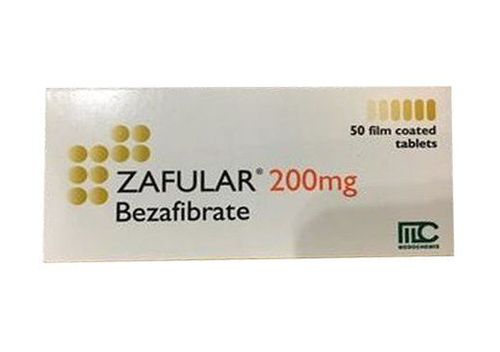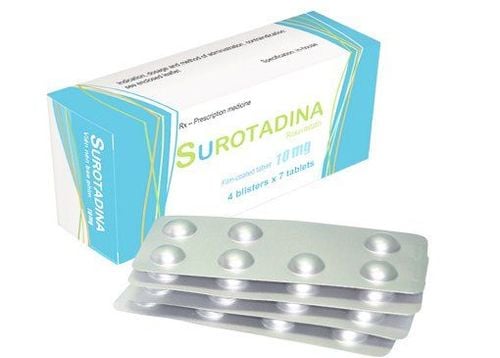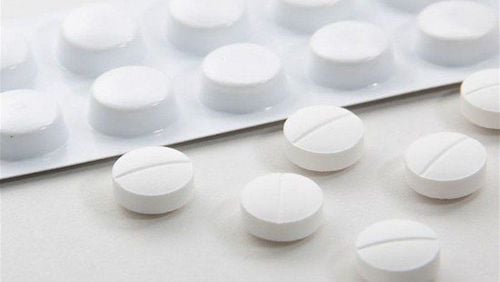This is an automatically translated article.
Clofibrate is a drug used in the treatment of dyslipidemia, helping to improve the patient's health status. So how does Clofibrate treat the disease and what is the note when using it?
1. What is Clofibrate?
Clofibrate is an anti-dyslipidemic drug belonging to the group of Fibrates. The drug is also known by other names: Clofibrato, Clofibratum, EPIB, Ethyl 2-(p-chlorophenoxy)isobutyrate, Ethyl chlorophenoxy iso butyrate, Ethyl clofibrate, Liprin.Clofibrate is prepared in the form of capsules with a strength of 500mg.
2. What are the uses of Clofibrate?
Clofibrate is used to reduce and treat dyslipidemia. Clofibrate is indicated for patients with primary beta-lipoproteinemia (type III hyperlipidemia) unresponsive to diet. Clofibrate is used in adult patients with very high serum triglycerides (types IV and V hyperlipidemia) with an increased risk of abdominal pain and pancreatitis. Especially those with high serum triglyceride levels above 2000 mg/dl and who have not responded adequately to diet, reduced alcohol intake, or a history of pancreatitis.For cases of type I hyperlipidemia with increased plasma chylomicrons and triglycerides but normal VLDL levels, clofibrate is not effective.
3. Usage and dosage of Clofibrate
Adults:
Use 1.5-2g/day divided into 3-4 times to use. Children:
There have been no studies on children under 18 months of age, so the use of the drug for children needs to be prescribed by a doctor. The drug should be taken with food to reduce possible gastrointestinal disturbances. In addition, do not use alcoholic beverages such as beer and wine to avoid possible unwanted side effects.
4. Clofibrate side effects
Clofibrate can also cause unwanted side effects, more or less affecting the patient's health.
Common side effects:
Diarrhea. Nausea. Rare side effects:
Chest pain, irregular heartbeat. Shortness of breath . Abdominal pain may be accompanied by nausea. Blood in the urine, difficult or painful urination. Cough and hoarseness. Fever. If you notice any of the above side effects or unusual health signs after taking this medicine, stop taking Clofibrate and consult your doctor.
5. Precautions when using Clofibrate
In case of medical conditions such as hypothyroidism, diabetes, stomach or intestinal ulcers, consult your doctor before taking the medicine. Clofobrate is effective in lowering blood lipids, but there are no studies showing a reduction in mortality from cardiovascular diseases. Serum lipids should be controlled with an appropriate diet, weight loss in obese people, exercise, diabetes control... before treatment with Clofibrate. During treatment with Clofibrate, serum lipids should be measured frequently for the first few months and periodically thereafter. If after 3 months of treatment, the patient does not respond to the drug, it is necessary to stop taking it and find a new treatment. Long-term use of Clofibrate can lead to gallstones. Therefore, it is necessary to regularly monitor and detect in time if there are symptoms of gallstones. With drugs in general and Clofibrate in particular are toxic to the liver. The level depends on the condition of the patient and the dose of the drug. Therefore, to have a healthy liver when taking Clofibrate, patients need to have liver enzyme tests and evaluate liver function to detect abnormalities. timely handling. Clofibrate can cause anemia and leukopenia, so a blood count should be done periodically and when there are abnormalities. For pregnant or lactating women, do not use this medicine. For women who are breastfeeding, it is necessary to wean the child from breast milk before starting the drug. Above is useful information about Clofibrate and its lipid-lowering effects. Note, Clofibrate is a prescription drug, patients need to use the drug as prescribed by the doctor, absolutely do not self-treat at home













